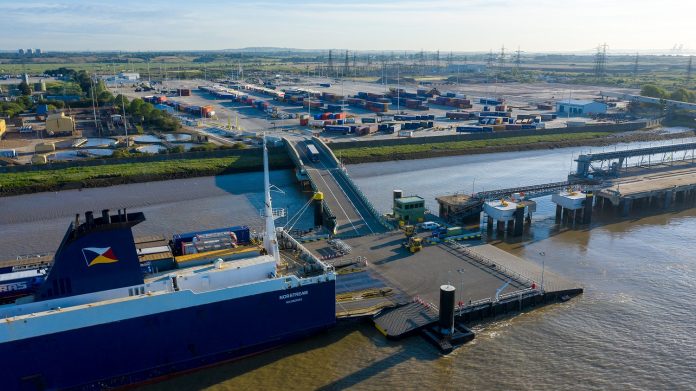Forth Ports Group has reported a 20% increase in unaccompanied freight volumes operating between its new terminal, Tilbury2, and Zeebrugge, following the addition of a P&O Ferries freight ferry vessel to the route.
The new terminal uses the latest booking and border technology and streamlined customs procedures through Authorised Economic Operator (AEO) trusted trader system. And it expects to see a growth in unaccompanied freight as shippers look to adjust supply chains after Brexit and during the enduring pandemic.
Following the congestion in Kent over the Christmas period, after France closed its border as the new coronavirus strain spread through the UK, new routes to market are being sought. In addition a shortage of UK drivers and the new rules for drivers heading into continental Europe complicate matters further, so freight owners may now be looking to adjust supply chains.
Charles Hammond, chief executive of Forth Ports Group, said, “The coronavirus pandemic has brought the UK’s vulnerabilities to the fore. However, breakdown presents an opportunity for breakthrough to create a more resilient UK.
Completion of the £250 million Tilbury2 terminal offers a Brexit-ready and Covid-19 compliant freight ferry terminal close to London, which creates significant opportunities for unaccompanied freight to the region, explained Hammond.
“Supply chains are realigning as they seek greater resilience and a low carbon route close to market,” he said, adding, “The breakdown of production lines, unpredictable industrial relations and increasing pan-European lorry driver shortages have led many in the logistics industry to examine the reliability of their current delivery options.”
Passenger numbers have all but disappeared from the UK connected ferry markets from Ireland, across the Channel and the North Sea, as the coronavirus “has completely changed the dynamics of the logistics industry.”
The lack of passengers has altered the freight market substantially according to Hammond. “In the absence of a cross-subsidy from passengers to freight units, greater exposure of the true end-to-end cost of moving goods is emerging. Combine this with the need to abate climate change, reduce road congestion, tackle poor air quality and level up the economies of the regions, the momentum for change is growing.”
Shortening supply chains will mean bringing goods closer to the point of consumption and production, and that could be a catalyst for the development of new ferry and container shipping routes.
“Combine this positive with the greater use of rail for inward distribution, unaccompanied freight is the answer to a number of the questions of our time.”
According to the terminal operating company the Tilbury-Zeebrugge ro-ro route has recorded 7% annualised growth in the first six months of Tilbury2’s operation. And its London Container Terminal at Tilbury has added five new routes in 2020 –from North Africa to Norway – with a 35% increase in European trade this year alone.







